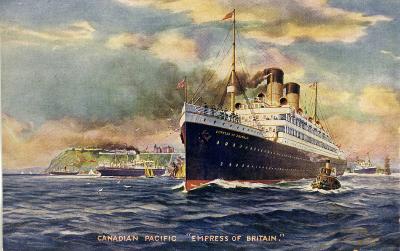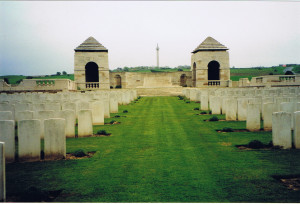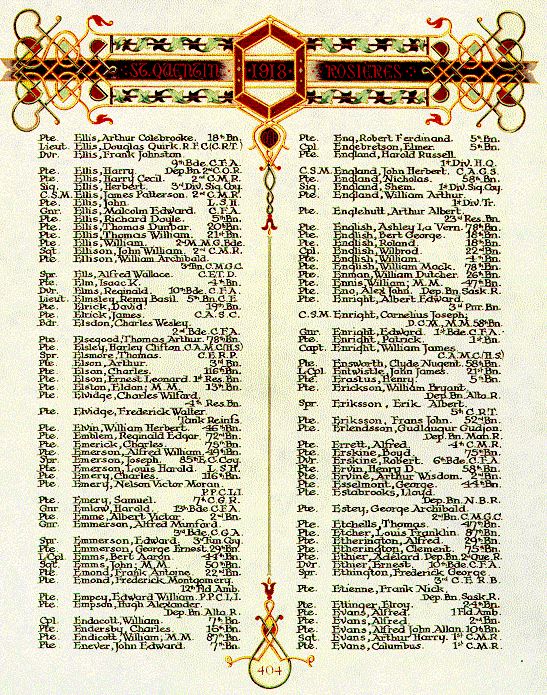Benjamin and Margaret English (nee Baldwin) lived at and ran the Queen Adelaide public house on Church Hill, Saxlingham Nethergate. It was situated near where the war memorial stands and is now a private house.

Queen Adelaide Public House, building end on to the road on the right, at the beginning 20th Century.
Bertie George ,born in June 1888, was their fourth child. Bertie was one of nine children. He had three older sisters, Ada Bessie born in1883, Jessie Charlotte born in 1885, Annie Maggie, born 1886; three younger sisters, Fanny Ethel born1889, Elsie Hannah Victoria born 1892 , Lillian Elizabeth born 1896 and two younger brothers, Cecil Benjamin born 1891 and Clarence Evelyn born in 1894.
Bertie attended the village school starting there on 17th June 1892. In 1911 he was still living at home with five of his siblings. He was working as a butcher. His brother Cecil was a waggoner, Clarence worked as a farm labourer, Elsie as a housemaid, Fanny as a dressmaker and Lillian was still at school. His elder sister Ada was a barmaid at the White Hart Inn in Hopton, Jessie was an upper housemaid in a residential school in Hendon and Annie was working for the GPO as a telegraph clerk in Horsey Post Office.
In 1913 Bertie emigrated to Canada. He travelled on the SS Empress of Britain from Liverpool arriving in Quebec on 26th September 1913.
From there he travelled on the Canadian Pacific Railway to Ripley, Bruce County, Ontario to work as a farm labourer.
He lived in the Kinloss area.. Kinloss and Ripley are now part of the Huron-Kinloss township which is situated on the east shore of Lake Huron in Ontario. It is an area of fertile farmland and has many small family farms and beautiful countryside.The area was mainly settled by people from Scotland and still celebrates its links with Highland games and pipe bands.
In Canada he was known as Bert instead of Bertie. He attended the Presbyterian Congregational Church in Lucknow. His name is included in a booklet produced by the Church in 1923 to celebrate its 50th Anniversary..
At the end of 1915 a recruitment drive was begun in Bruce County to form a battalion to fight in the war. Bertie enlisted on 2nd February 1916 at Lucknow Ontario.
His medical report described him as being 5 feet and six and a half inches tall, having a dark complexion with black hair and brown eyes. As well as faint vaccination marks on his arms, he also had an inch long transverse scar on his right temple. On his attestation paper his birth date is given as March 19th 1890 but this likely to be incorrect as the Census records and the date at which he started school indicate that he was born in June 1888. He gave his occupation as that of a farm hand in Kinloss, Ontario.
In May the 160th Battalion, of which he was part, mobilized and spent the next few months training. However, in order to enable the crops in Bruce County to be harvested, ninety per cent of the men were allowed a month’s leave during August and September. Then on 17th October 1916 the Battalion comprising of 31 officers and 841 men sailed from Halifax on H.M.T. Megatama for Liverpool, arriving there on 28th October 1916. They were part of the 13th Canadian Infantry Brigade.
The Battalion transferred by train to Witley and Bramshott camps in Surrey. Bertie was based at the camp at Witley for the next fourteen months.
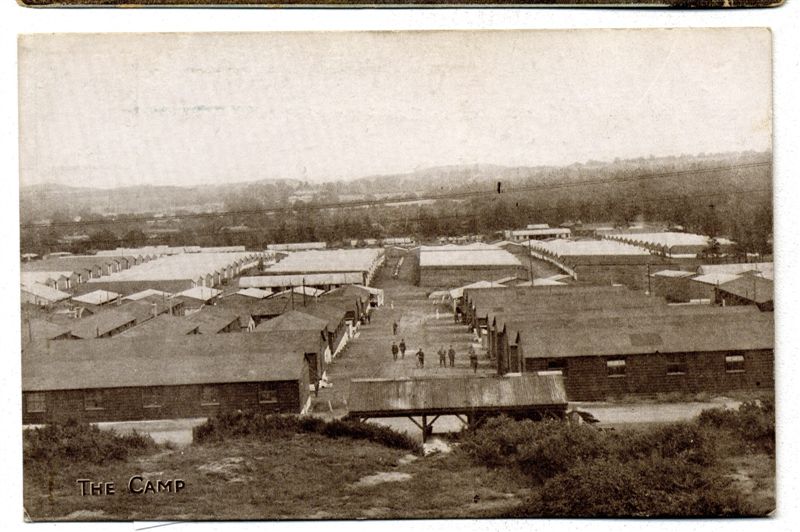 In February 1918 the Battalion was disbanded and the men transferred to different Canadian Battalions. Bertie was transferred to 4th Canadian Reserve Battalion and moved to Bramshott Camp on 24th February 1918. He was transferred from there to 18th Battalion, Canadian Infantry, and arrived at the Canadian Infantry Base Depot at Etaples in France on 29th March 1918. These bases were in easy reach of the channel ports and the men were kept there in training until they were needed elsewhere. He stayed there for five days before he was moved to the Canadian Corps reinforcement camp. He joined the 18th Battalion in the field on 14th April 1918. In the war diary of the Battalion it is recorded that 60 men arrived as reinforcements on that day. Bertie was one of these men
In February 1918 the Battalion was disbanded and the men transferred to different Canadian Battalions. Bertie was transferred to 4th Canadian Reserve Battalion and moved to Bramshott Camp on 24th February 1918. He was transferred from there to 18th Battalion, Canadian Infantry, and arrived at the Canadian Infantry Base Depot at Etaples in France on 29th March 1918. These bases were in easy reach of the channel ports and the men were kept there in training until they were needed elsewhere. He stayed there for five days before he was moved to the Canadian Corps reinforcement camp. He joined the 18th Battalion in the field on 14th April 1918. In the war diary of the Battalion it is recorded that 60 men arrived as reinforcements on that day. Bertie was one of these men
The 18th Battalion was stationed in the Arras area. During the following four months the battalion followed a pattern of spending about five days on the front line, a similar period in the support lines and then having time to recuperate and train. When they were in the front line much of the time was spent repairing the trenches, the wire and making forays to see what the Germans were doing. There are reports in the war diaries of contact with the enemy but not involving large numbers of men. They were subjected however to bombardment by the enemy and at times to gas shells. Throughout the periods of time in both the front line trenches and the support trenches there were reports of deaths and men wounded.
During their time away from the trenches they attended lectures, trained, had baths and played football or baseball. They had little time to actually relax. They were always on standby to move at 12 hours notice. (See attachment for an example of a typical day when not in the trenches)
In August 1918 it was decided that the 4th Canadian Infantry Brigade, of which 18th Battalion was part, would be involved in a major attack in the Dainville- Berneville area. This attack began on 26th August, starting at 3 a.m. The 18th Battalion was involved in supporting the attacking battalion. During the following two days they encountered several set backs, including their supporting tanks becoming lost in the darkness and artillery barrage not happening as scheduled. The 18th Battalion was subjected to a heavy artillery barrage and intense machine gun fire from the German troops. On the first day 10 men were killed and 15 wounded and on the second day 15 men were killed and 150 wounded.
On 28th August the Battalion’s operation began at 12.30 p.m. with the intention of crossing the Sensee River and taking the German trenches. The Battalion encountered heavy machine gun fire again and impenetrable wire in front of the trenches. They were forced to take cover in sunken roads and shell holes and temporarily withdraw. On this day 30 men were killed and 70 wounded.
Bertie was one of the wounded, receiving gunshot wounds to his chest and left leg. He was eventually admitted to the 14th General Hospital in Wimereux on 30th August 1918.
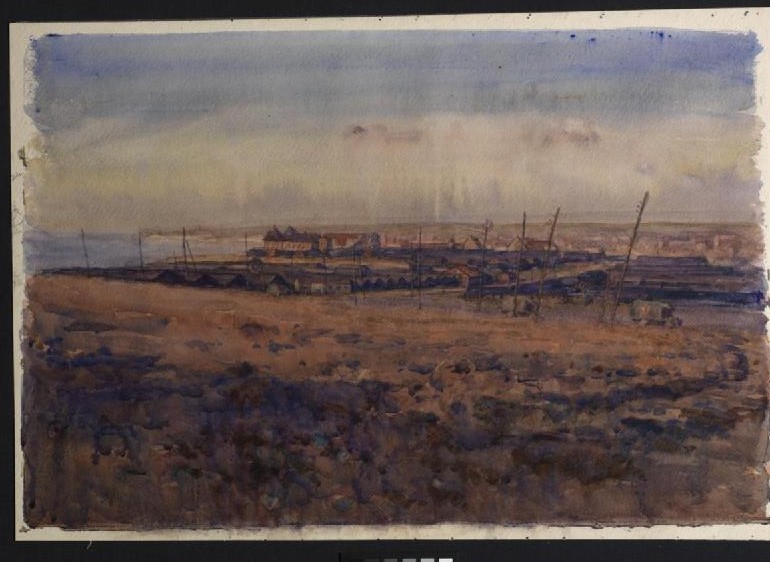
14th General Hospital, Wimereux. Painting by David A Baxter. Reproduced by permission of Imperial War Museum.
No doubt he would have been initially treated in a dressing station near to where he was wounded and then transferred to a Casualty Clearing Station , a few miles further away from the battle before being sent to the hospital. He remained there until his death from his wounds at 1.00 p.m. on 1st October 1918. His mother received a letter saying that he died soon after arriving at the hospital but his service records record that he was there for some time before he died.
He is buried in Terlincthun British Cemetery, Wimille, near Boulogne. The cemetery was created in June1918 and used mainly for the burial of men who died in the nearby hospitals.
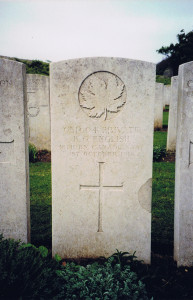 Although his mother was given as his next of kin and received his medals, in his will he left his property to his sister Fanny, who had married Thomas Frederick Dade in October 1911 and lived in Saxlingham Nethergate. She received his back pay and savings which amounted to 481.98 Canadian dollars.
Although his mother was given as his next of kin and received his medals, in his will he left his property to his sister Fanny, who had married Thomas Frederick Dade in October 1911 and lived in Saxlingham Nethergate. She received his back pay and savings which amounted to 481.98 Canadian dollars.
Both his brothers Clarence and Cecil enlisted and they both survived the war.
His name appears on the war memorial in Lucknow, Ontario and he is also remembered on the Bruce County Military website www.bruceremembers.org/soldiers/2791
He is remembered in Canada also in the Canadian Book of Remembrance -First World War.
Acknowledgements
Census records: 1881,1891, 1901, 1911
Saxlingham Nethergate School log book.
National Archives of Canada- Service Records
Canadian Expeditionary Force Study Group. Information about 160th Battalion.
Canadian Great War Project: War diaries.
www.tudorrow.com Information and postcard of Witley Camp.
Imperial War Museum. Painting of 14th General Hospital Wimereux
Libraries and Archives Canada. War diaries.
Papers from Saxlingham Nethergate Church Chest now deposited in Norfolk Record Office
Lucknow Presbyterian Congregation booklet produced in 1923, courtesy of Bruce County Museum.
Many thanks to Sue Schlorff, Archival Assistant at Bruce County Museum and Cultural Centre, Canada, for all the information and help which has given me. It was great to have the chance to meet her and to visit the Bruce County Museum in 2017, where there is a impressive exhibition about the First World War.

